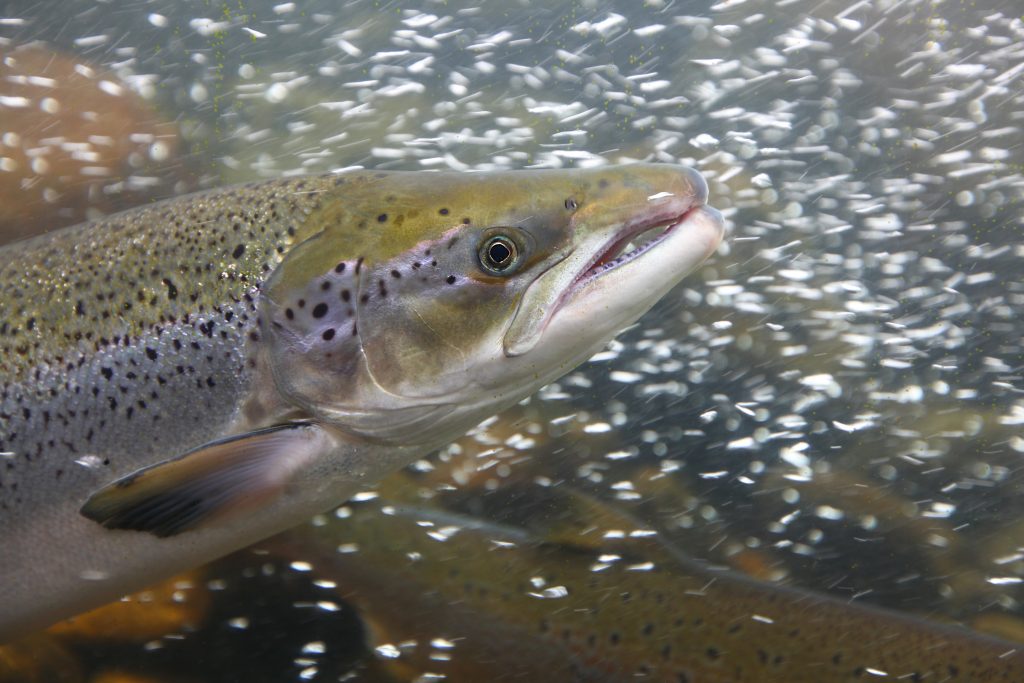
Results of new salmon study questioned
May 8, 2018
By
Liza Mayer
A new study on the effects of Piscine Reovirus (PRV) on wild salmon has met with criticism from experts.
 A new study on the effects of Piscine Reovirus (PRV) on wild salmon has met with criticism from experts
A new study on the effects of Piscine Reovirus (PRV) on wild salmon has met with criticism from experts PRV is commonly present on farmed and wild salmon in the Pacific and is often present in fish that show no signs of ill health. But the new study, led by Department of Fisheries and Oceans (DFO) scientist Dr Kristi Miller-Saunders, has blamed the virus for a related heart and skeletal muscle inflammation disease (HSMI) afflicting wild Chinook salmon in the province of British Columbia.
“The conclusions drawn in this report are speculative at best and run counter to the findings of extensive research done by numerous other scientists at DFO and around the world, as well as what we see on the farm everyday,” said Vincent Erenst, chair of the BC Salmon Farmers Association (BCSFA). “The report presumes the presence of a virus equates to disease, when in fact the virus is common but the fish on our farms are not sick. Much like humans, it’s normal that fish are naturally expose d to numerous viruses every day without adverse affect.”
Dr. Ian Gardner, Canada Excellence Research Chair in Aquatic Epidemiology, agreed. “The study makes broad sweeping statements not supported by evidence, hence I concur with it being described as a speculative report,” Gardner was quoted as saying by Seawestnews.
Gardner, who is part of the Strategic Salmon Health Initiative (SSHI) like Miller-Saunders, added: “… we have not been able to reconcile our data with what is being released today by Dr Miller and others.”
Gardner also noted that Miller-Saunders’s report also does not make any reference to the study he and his team have done, for which Miller-Saunders did all the molecular testing.
Gardner continued: “Sometimes when someone does not like the results of a particular study, they review the findings and this tends to see an introduction of bias.”
An aquaculture veterinarian with more than 25 years of experience, Dr Hugh Mitchell, also weighed in on the study’s conclusions. “PRV and other viruses have different impacts on different species of farmed and wild fish. You also have to look at other factors like the environment. It is not science to state that the potential impact on a particular species means that everything else is at risk,” he told the publication.
In September 2016, Miller-Saunders told Aquaculture North America (ANA) the role of PRV in the development HSMI was unclear: “This disease is particularly difficult to understand. PRV has not been 100 percent confirmed as a cause of HSMI but there has not been a case of HSMI without PRV. However, PRV has also been found in fish that have no clinical signs of the disease, leaving its role in disease conditions, such as HSMI, unknown.”
Miller-Saunders is no stranger to controversy. Her dispute with Dr Gary Marty, lead fish pathologist at BC’s Animal Health Centre (AHC), whose tasks include diagnosing farmed fish diseases, led to a probe of AHC. That investigation cleared AHC of conflict of interest.
“The health of farmed and wild fish populations is incredibly important,” said Erenst of BCSFA“We have a long history of drawing upon good science to keep getting better at farming responsibly, with protecting wild fish and the environment at the forefront . We are committed to continuing to evolve into the future.”





